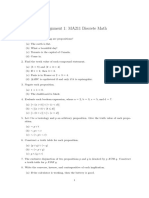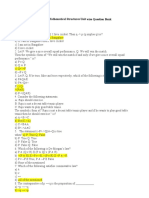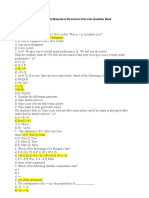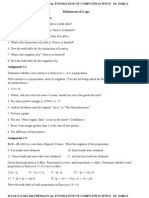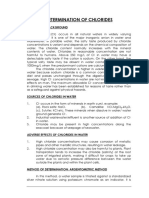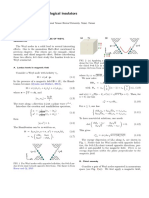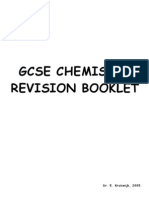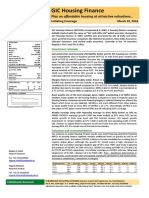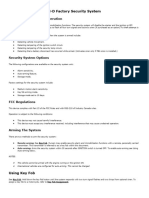DEPARTMENT OF COMPUTER SCIENCE AND ENGINEERING
ISLAMIC UNIVERSITY OF SCIENCE AND TECHNOLOGY,
AWANTIPORA
Marks
Name of
Roll No. for official use
Student:
Branch: Date: Signature of Signature of
Batch: Regular/Repeat: Student: Invigilator:
Session: Autumn 2024 Mid-Term Examination
Program: B. Tech Semester: 3rd
Course: Discrete Mathematics Course Code: CSE204C
Duration: 30 Minutes Max.Marks: 30
SET B
Instructions: Attempt all questions. Each question carries 02marks. Tick the most appropriate option
using a ballpoint pen. Tick only one option. Correction or overwriting will not be considered. Roll
No. and Signature must be put on each page at specified places.
D) If P→Q and P, then Q.
Q1 Which of the following is equivalent to pq
a) None
b) p is necessary for q
c) ¬p ˅ q Q5. Which of the following represents converse?
d) q is sufficient for p
a) qp
b) ¬p¬q
Q2. p⊕q is true c) ¬q¬p
a) When one of p and q is true d) pq
b) When both are true
c) When both are false Q6. Which of the following is ranslation of the
d) Both b and c statement
∀x (C(x )∨ ∃y (C(y ) ∧ F(x, y)))
.
a)
where C(x) is “x has a computer,” and F(x,y) is
“x and y are friends,” and the domain for both x
Q3 Which of the following correctly represents
and y consists of all students in your school.
modus tollens?
a) Every student in your school has a
a) If P then Q. Q, therefore P.
friend or has a friend who has a
b) If P then Q. Not Q, therefore not P.
computer
c) If P then Q. P, therefore Q.
b) Every student in your school has a
d) If P then Q. Not P, therefore Q.
computer or has a friend who has a
computer
Q4. Which of the following represents modus
c) Some student in your school has a
ponens?
friend or has a friend who has a
A) If P→Q, then Q. computer
d) Some student in your school has a
B) If Q→P, then P. computer or has a friend who has a
C) If P∧Q, then P. computer
� a) a(c˅¬f)
Q7. Let U be the real numbers, b) a(c˅f)
c) a(c˄f)
Define P(x,y) : x ∙ y = 0 d) None of these
b) ∀x∀yP(x,y)
Which of the following is false? Q13. Which of the following is contradiction?
c) ∀x∃yP(x,y)
d) ∃x∀y P(x,y)
a) p˅¬p
∃x ∃ y P(x,y)
b) p˄¬p
c) p
d) pp
Q8. Which of the following is true about Q14. De Morgan’s law can be represented as
implication?
a) ¬ (p ˅ q) ≡ ¬p ˄ ¬q
a) It is always true b) ¬ (p ˅ q) ≡ ¬p ˅ ¬q
b) It is always false c) ¬ (p ˅ q) ≡ p ˄ ¬q
c) It is false when antecedent is true and d) ¬ (p ˅ q) ≡ ¬p ˄ q
consequent is false
d) It is false when antecedent is false and Q15. Which of the following represents negation
consequent is true law:
a) p ˅ ¬p ≡ T
Q9. What is negation of the proposition “it is b)¬(¬p) ≡ p
raining and the sun is shining”? c) p˅¬p ≡ F
a)It is raining or the sun is shining. d) none of these
b)It is not raining or the sun is not
shining.
c)It is raining and the sun is not shining.
d)It is not raining and the sun is shining Roll No. of Student:
Q10. . Which of the following represents Signature of Student:
inverse?
a) qp
b) ¬p¬q
c) ¬q¬p
d) pq
Q11. All but the final preposition are
called_________
a) conclusion
b) premises
c)consequent
d)none of these
Q12. Which of the following represent the
statement “you can access the internet from
campus only if you are a computer science major
or you are not a freshman”.







